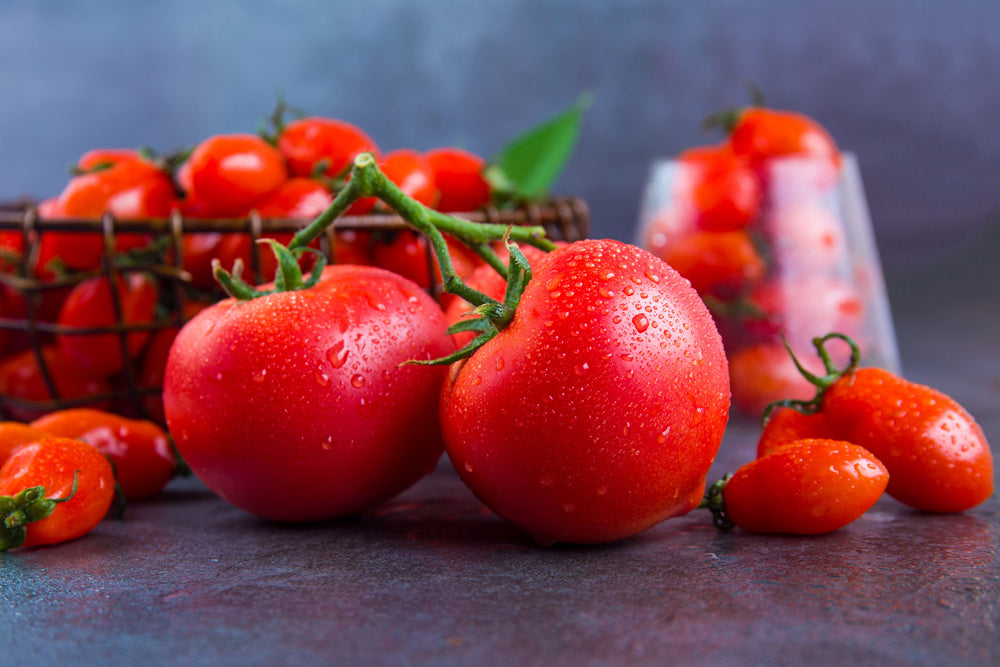Tomatoes are one of the well-known fruits and vegetables. They can be found in major supermarkets and markets all year round. The most common ones are ordinary large tomatoes and small tomatoes that people often eat as fruits, commonly known as saint tomatoes. fruit.
Small tomatoes and large tomatoes, both belonging to the Solanaceae family, Solanaceae, taste sour, sweet and very delicious. As a food with low sugar content, low calorie and medium glycemic index, it is also very suitable for diabetics.
However, many people with diabetes still don’t know whether it is better to choose large tomatoes or small tomatoes when purchasing. Today, Nono will introduce to you the differences between the two types of tomatoes and some precautions when eating them.
Nutritional benefits of tomatoes
Tomatoes are rich in lycopene, which is one of the strongest antioxidants found in plants in nature. Rich lycopene can scavenge free radicals, prevent blood clots and platelet aggregation, and reduce heart attacks.
In addition, nutrients such as vitamin C, vitamin B6 and folic acid in tomatoes are beneficial to preventing lead poisoning, accelerating wound repair, reducing the risk of heart disease and stroke, and promoting the glucose and insulin uptake process of diabetic patients.
But from a nutritional point of view, the content of lycopene, dietary fiber, vitamin C, B vitamins, potassium and other nutrients in small tomatoes is significantly higher than that in large tomatoes. The nutritional value is higher and can better meet the body's nutritional requirements. needs.
Sugar content of two kinds of tomatoes
The sugar content of cherry tomatoes is 5.8%, which is a low-sugar load fruit (sugar content <10%). Each 100 grams can provide 22 kcal of energy, which is equivalent to about 5.8 grams of carbohydrates.
The sugar content of large tomatoes is <3%, and each 100 grams can provide about 11 kcal of energy, which is equivalent to about 3.3 grams of carbohydrates.
According to the above comparison of sugar content, large tomatoes are more suitable for diabetic patients, but compared to other fruits, the sugar content of small tomatoes is still lower, and they are low-sugar load fruits (sugar content <10%), so , sugar lovers can also eat small tomatoes with confidence.
How can sugar lovers eat more reasonably?
Although tomatoes are suitable for diabetic patients, they cannot be eaten freely. The following points should be paid attention to.
People with diabetes eat tomatoes as fruits and should control their consumption. A medium-sized tomato weighs about 200 grams, and a small tomato weighs about 15 to 20 grams. The daily intake of tomatoes should not exceed 400 grams.
It is recommended to eat it between meals, between 9 and 10 am and between 3 and 4 pm. It can also be eaten in divided doses when you feel hungry or after exercise.
Although tomatoes have low sugar content, people with diabetes should eat them under the premise that their blood sugar reaches the standard. If their blood sugar is not under control and they still want to eat tomatoes, it is recommended that people with diabetes reduce the corresponding amount of staple food from their meals. The overall principle is to ensure that every day Total daily caloric intake remains the same.
How to choose tomatoes
1. Look at the appearance: don’t buy “black fruit”
The peel of ripened tomatoes is dark, uniform in color, and the fruit base is black. The skin of naturally ripe tomatoes is shiny, the color distribution is uneven, and the fruit base is also red and green.
2. Touch the pulp: choose soft or hard
Softness and hardness are important criteria for judging whether tomatoes are ripe. Really ripe tomatoes are soft when pinched. As long as they are hard to the touch, no matter how red the color is, they are not yet ripe.
3. Look at the seeds: more seeds are safer
Ripe tomatoes usually have no seeds, and even if they do, they are very few in number and green in color. The seeds of ripe tomatoes are earthy yellow.
4. Taste: sour and sweet
Ripened tomatoes have hard flesh and astringent taste, while naturally ripe tomatoes are juicy and sweet and sour.
Generally speaking, the sugar content of large tomatoes is relatively lower. If you have poor blood sugar control, it is recommended to choose large tomatoes.

